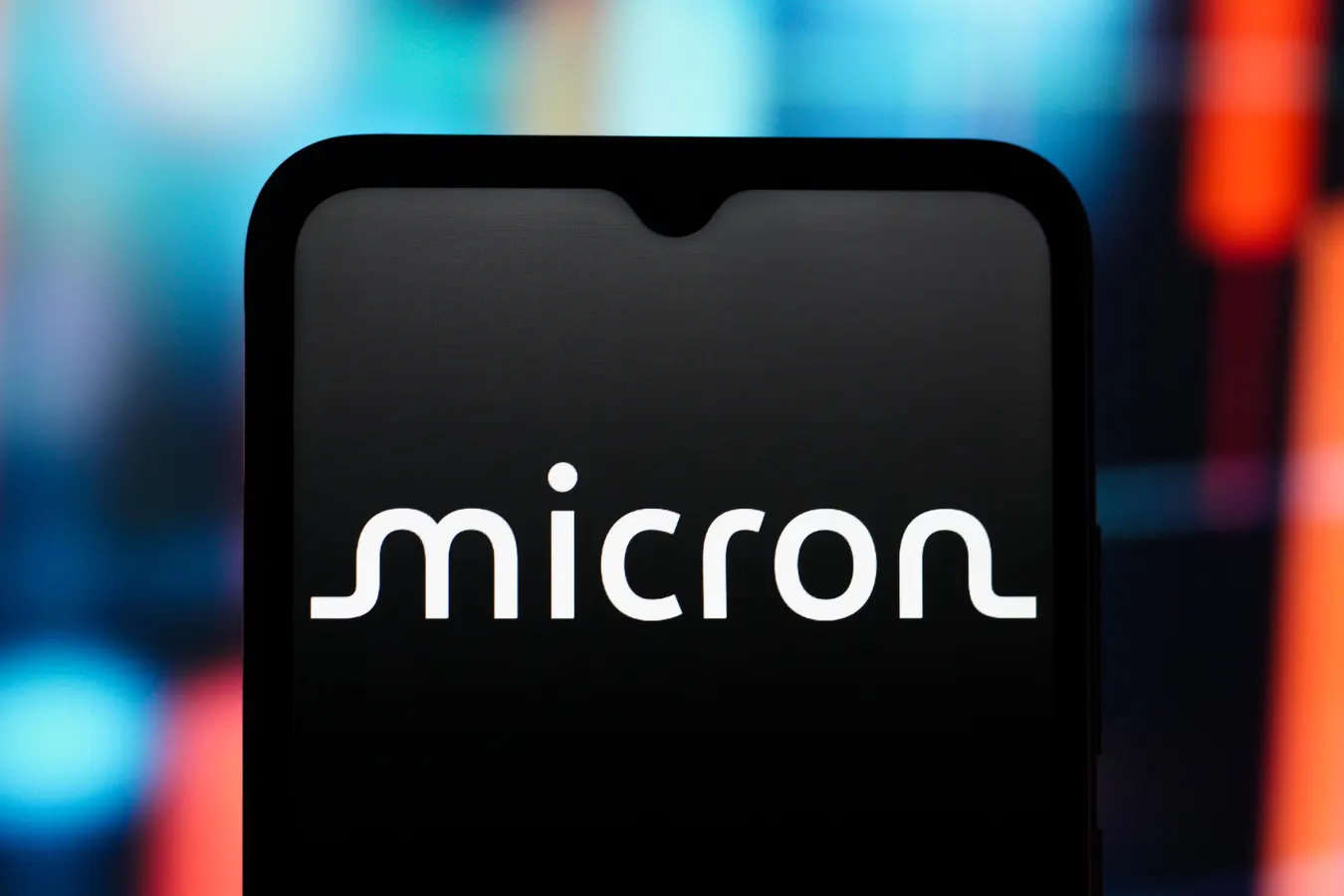By Contributor,Thomas Fuller,Trefis Team
Copyright forbes

CANADA – 2025/09/06: In this photo illustration, the Micron Technology logo is seen displayed on a smartphone screen. (Photo Illustration by Thomas Fuller/SOPA Images/LightRocket via Getty Images)
SOPA Images/LightRocket via Getty Images
As generative AI transforms various industries, one of the most essential – yet frequently overlooked – elements driving this change is memory. Memory manufacturer Micron (NASDAQ:MU) is central to this evolution, supplying the high-bandwidth memory (HBM) and DRAM necessary to keep extensive AI models operating at both speed and scale. As AI workloads become increasingly complex, memory is becoming vital for hyperscalers and cloud service providers. While GPUs and accelerators capture attention, memory is the discreet backbone that dictates the speed and efficiency of these systems. The stock price of Micron reflects this rising demand, having surged roughly 85% year-to-date in 2025. Nonetheless, is the stock still worthy of consideration at present valuations?
Regardless of its appeal, investing in a single stock carries significant risk. The Trefis High-Quality Portfolio has been designed to lessen stock-specific risk while providing upside potential.
Earnings And Outlook
The figures from Micron’s results speak for themselves. For the quarter ending in August, Micron’s revenue reached $11.32 billion, an increase of 46% year-over-year, while adjusted net income skyrocketed by 157% to $3.47 billion ($3.03 per diluted share). Remarkably, sales in the cloud memory segment more than tripled to $4.5 billion. CEO Sanjay Mehrotra informed analysts that the demand for Micron’s DRAM and NAND offerings was stronger than previously anticipated, enhancing the company’s outlook.
Robust DRAM shipments across all end markets, strong pricing due to constrained supply and low inventory levels, along with slower transitions to newer process nodes limiting total output, are all factors contributing to growth. Micron anticipates a favorable demand-supply balance for DRAM in 2026, which will support ongoing profitability. For Q1 2026, Micron projects revenue of $12.5 billion, plus or minus $300 million, marking an increase of approximately 61% year-over-year at the midpoint.
Strong HBM Memory Demand
HBM is an ultra-fast, low-latency memory primarily crafted for AI accelerators and GPUs to swiftly process vast model data, while DRAM provides larger-capacity, general-purpose memory supporting AI workloads by storing large volumes of data, albeit at slower transfer speeds than HBM. Micron serves as a primary memory and storage partner for Nvidia’s Blackwell GB200 and GB300 platforms, supplying both HBM3E and LPDDR5X solutions, and is also a key supplier for AMD’s Instinct MI350 GPUs. Nvidia’s latest systems incorporate 33% more memory per node compared to previous generations, as AI models increasingly adopt a multimodal approach – integrating text, video, and speech – heightening the demand for memory. Refer to our note on how Micron Stock Surges 2x To $300
MORE FOR YOU
To underscore the magnitude of investment in AI, Amazon (NASDAQ:AMZN), Alphabet (NASDAQ:GOOG), Microsoft (NASDAQ:MSFT), and Meta (NASDAQ:META) have suggested that they could collectively commit $364 billion to capital expenditures in their respective current fiscal years. Earlier in September, Oracle revealed it has entered into contracts worth hundreds of billions of dollars to offer cloud computing services to OpenAI and other large clients. While these infrastructure agreements will necessitate computing power – either GPUs or custom ASICs, as well as server and networking equipment, memory will also be vital, and Micron stands to gain significantly from this expansion. With the ascent of AI adoption throughout the economy, Micron is poised for sustained growth.
Indications suggest that the most compute-intensive phase of AI training may start to plateau, with the industry pivoting toward inference – the application of trained models to fresh data in real-time and at massive scale. Inference is less demanding per task but takes place continuously across millions of users and applications. HBM is critical for enabling AI inference at scale, thanks to its bandwidth and power efficiency benefits, complementing high-performance GPUs primarily utilized for training. This trend undeniably favors specialized, power-efficient suppliers like Micron.
Supply Boost
However, supply may struggle to keep up. Manufacturing HBM is more complex than producing standard DRAM, and supply levels remain tight. Creating HBM is wafer-intensive—it necessitates around three times more wafers than standard DRAM to yield the same volume of bits due to its lower bit density and complex 3D stacking, resulting in a natural bottleneck. While Micron has been increasing its HBM production capabilities, its output for 2025 has already been sold out, with strong demand expected for 2026. The company allocated $13.8 billion for capital expenditures in FY’25 and plans to further boost spending in 2026, chiefly to enhance DRAM capacity for AI workloads. For Q1 2026 alone, Micron aims to invest $4.5 billion, with the majority of capex focused on DRAM. This figure serves as a baseline for what investors can anticipate each quarter, indicating that total capital expenditures for the year will likely exceed $18 billion.
Despite this notable rally, Micron stock is valued at approximately 10 times estimated earnings for 2026. Projected growth appears robust: anticipated revenues are expected to increase by 42% in 2026, based on consensus forecasts. Nevertheless, the memory market has historically been cyclical. DRAM and NAND are susceptible to variations in supply and demand, along with price volatility. At this point, it seems that HBM acts as a partially secular growth factor, given the relentless investment by major tech firms over the last three years. However, HBM currently represents only a small fraction of total sales, meaning the company is not completely shielded from traditional market cycles.
The Trefis High Quality (HQ) Portfolio, comprising 30 stocks, boasts a history of consistently outperforming its benchmark, which includes the S&P 500, Russell, and S&P midcap — and has achieved returns exceeding 91% since its inception. What is the reason for this? Collectively, HQ Portfolio stocks have provided superior returns with lower risk compared to the benchmark index; resulting in a less tumultuous experience, as demonstrated by the HQ Portfolio performance metrics.
Editorial StandardsReprints & Permissions



